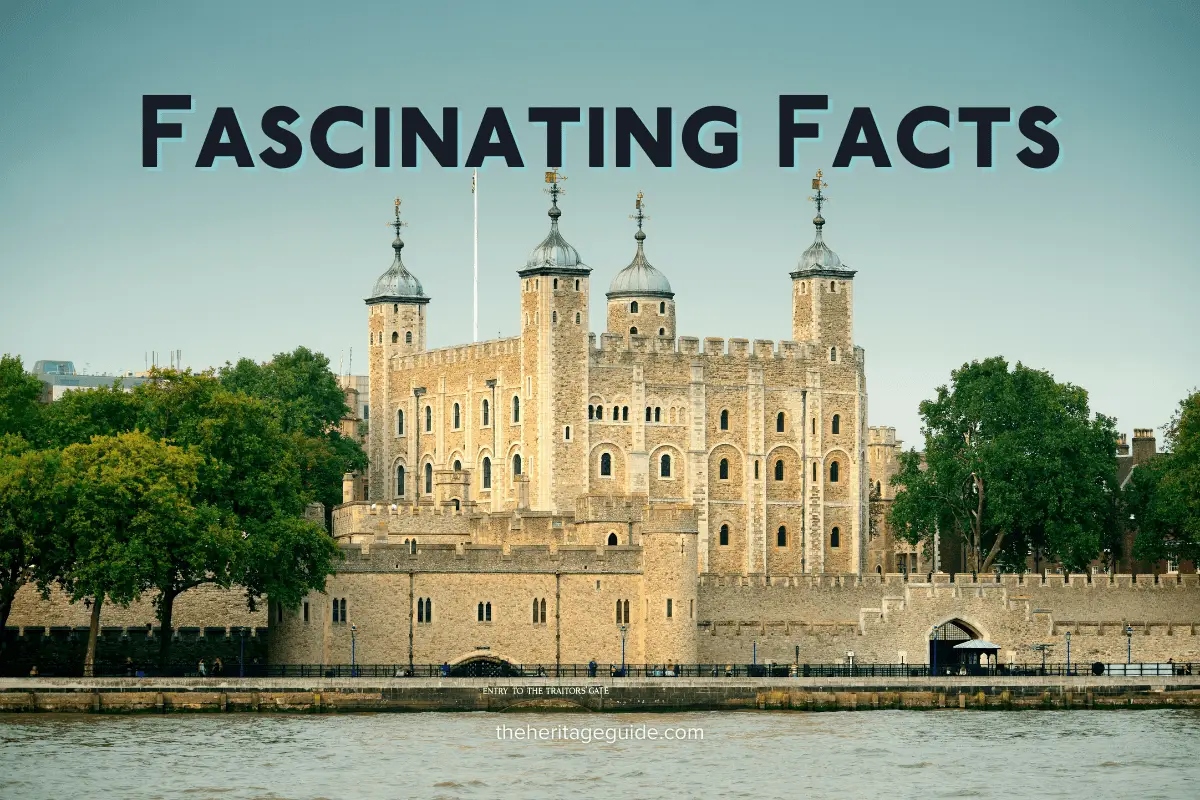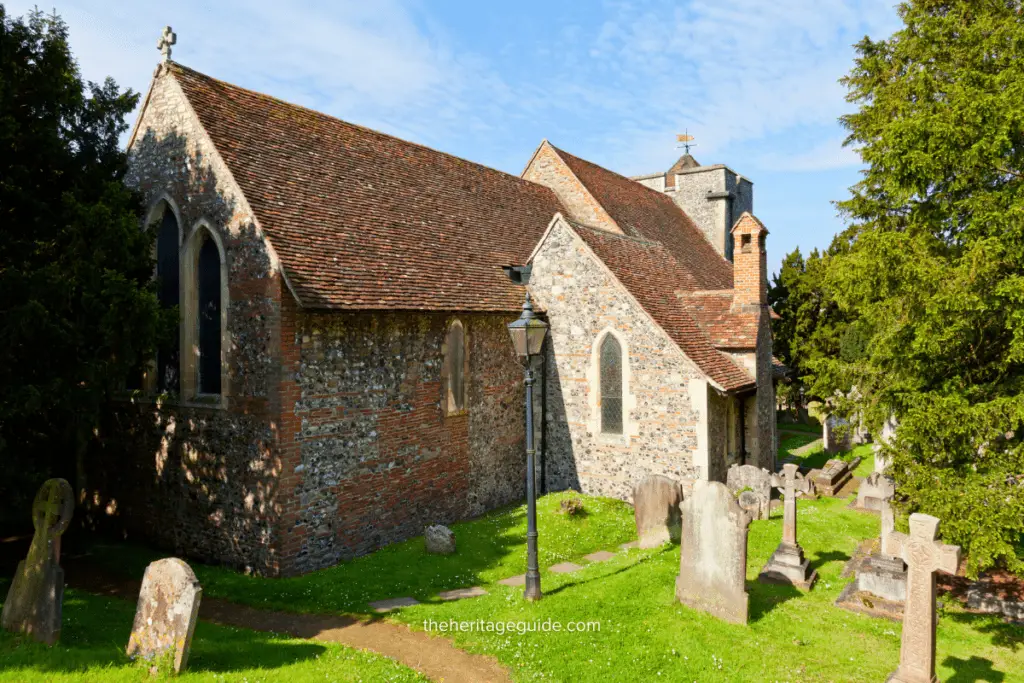Discover fascinating Tower of London facts! Learn its history from palace, to prison to fortress and mint. Includes a timeline of historic dates.
Tower of London Name
The full name of the tower is is ‘Her Majesty’s Fortress and Palace – The Tower of London’.
How Much are Tower of London Tickets
Tickets to the Tower of London are around £30 for an adult and £15 for a child You can buy tickets to The Tower of London on the Historic Royal Palaces website.
What has the Tower of London been used for?
It has been a fortress and a palace, a prison and a place of execution. It has housed the Royal Mint, Royal Observatory, Royal Menagerie and Public Records. It still provides high security protection for the Crown Jewels and the Royal Armouries collection.
How big is the Tower of London?
The tower covers over 18 acres.

Who Lives in the Tower of London
It is currently home to around 150 people, but previously has housed 1500 people including the Yeoman Warders.
How many towers are in the Tower of London
The Tower of London actually consists of 20 towers, set within two concrete walls, built over the course of two and a half centuries which has been altered and extended ever since.
Tower of London Ravens
The ravens are loyal and trustworthy birds who guard the tower 24 hours a day. Legend says that if the ravens leave the tower, the monarchy will fall.
The White Tower
The White Tower is one of the towers most iconic buildings. Construction was began by William I. Visitors to the tower still enter by it’s original door, set 15 feet above ground level and approached via a wooden staircase, which could be burned in case of attack.

The four-storey interior was equipped with three wells, three fireplaces and lavatories (known as garderobes) on the top three floors.
Henry I added a free-standing chapel which was dedicated to St Peter in Chains. It was later rebuilt by Henry VIII in 1520.
In 1240 the keep was whitewashed and the tower becomes known as the white tower for the first time.
The half timbered houses were built by Henry VIII and were where Guy Fawkes was interrogated.
Who was the Tower of Londons First Prisoner?
The first prisoner was Ralf Flambard, Bishop of Durham in 1101. He was arrested for selling Benefices, which were rewards that the church usually offered in return for services. Whilst imprisoned, he made his guards drunk and then escaped from the window by a rope.
Where is the Tower of London
The Tower of London is located on the River Thames in London.
Tower of London address: London EC3N 4AB
Who built the Tower of London?
The building was begun by William I and it was added to by successive monarchs until Edward I completed the outer wall, enclosing an area of 18 acres.
Why and when was the Tower of London Built?
Soon after the Battle of Hastings in 1066, William I ordered a temporary fort to be built outside the city wall to awe people into submission. Later he required a stone tower which was built by Gundulf, a tearful emotional monk from the Abbey of Bec in Normandy. He later became Bishop of Rochester and designed several churches and fortresses. Caen limestone, Kentish ragstone and local mudstone were used in the building.
The walls range from 15ft thick at the bottom to 11ft at the top. They are 90ft high and although the building looks square, the sides vary between 107ft and 118ft long. The only entrance to the keep was on the south side, about 15ft above ground, with a flight of wooden steps which could be removed in case of attack.
The ground floor was intended for use as a store, but was later used as dungeons. In the dungeons is the Little Ease, a 4ft square where the prisoner could neither stand or lie down. The first floor was for soldiers and servants, the second contained the banqueting hall, St Johns Chapel and the sleeping accommodation for the nobility and the third floor were the royal bedrooms and council chamber. There was only one staircase in the Northeast corner. It spiralled in a clockwise direction so that defenders could have the advantage of holding their swords in their right hand. From every apartment the garrison could keep watch on the city and surrounding countryside. Water was supplied by three wells and there were three fireplaces. The lavatories or latrines featured seats and chutes.
It is not known exactly when the keep was finished. It is not mentioned in the Domesday survey carried out in 1086. Some believe it was finished in the reign of William Rufus, others Henry I.
When Was The Tower Of London A Zoo
In 1235 the Holy Roman Emperor gave Henry three leopards, due to the three leopards on the Plantagenet coat of arms. This was the start of the Royal Menagerie or Royal Zoo.
The animals were available for public viewing and this coined the expression ‘ going to see the lions’.
The First Coronation from The Tower
In 1236 Henry III (1216-72) weds Eleanor of Provence and the coronation procession go from the tower for the first time.
Tower Green
Before the 20th Century, there were seven executions within the castle at Tower Green; as was the situation with Lady Jane Grey, these were reserved for prisoners who were deemed dangerous to the public.
Exotic Animals
In 1252 the Sheriffs of London were ordered to provide 4d a day for food for a polar bear. The bear was a gift from the king of Norway. The money also went to a chain so that it could fish in the Thames.
An elephant later arrived from the King’s French cousin, Louis IX. The public were allowed to see the animal until it’s death and burial within the tower walls.
Ceremony of the Bath
In October 1399 Henry IV chose 46 of his followers. As an act of spiritual cleansing, they had to climb into the baths that adjoined the hall at St Johns Chapel. Whilst they were in the bath, the King made a cross on each man’s back to knight him. After a short rest in 46 separate beds, the new knights spent the night praying in the chapel. At the end of this stint, they offered a taper to God and a penny to the King on the alter.
Royal Mint
The Mint was moved to the Tower from Westminster in 1300.
Henry VI
Henry VI was captured at Clitheroe, Lancashire in 1464. He was brought to London and made to sit on a sickly horse with his legs tied to the stirrups. A straw hat was put on his head and he was led into the tower. He was imprisoned in the Wakefield Tower and had with him a Bible, breviary, a pet dog and a pet sparrow. He told the chaplain, ‘I do not mind, so long as I can have the Sacrement. I am not worried about the loss of my earthly kingdom.’
After six years of imprisonment he was rescued from his prison by Warwick, the King Maker, supported by the Archbishop of York and Bishop Wainfleet, and proclaimed king at Westminster. He was recaptured at the battle of Tewksbury, returned to the tower and in May 1471 murdered at his prayers in the Wakefield Tower. Edward IV announced that he died of pure displeasure and melancholy.
Every year on the anniversary of his death, the institutions he founded remember him. Eton College lay lilies at the place death, King’s College Cambridge white roses.
Tower of London Crown Jewels
It was decided in 1303 that the Crown Jewels should be kept at the Tower of London after various jewels had mysteriously gone missing from Westminster. Potentially they went missing from the Jewel Tower. The Abbot of Westminster, 48 Monks and 32 other suspects were later brought here as prisoners.
Since the late 17th century, the Crown Jewels have been displayed at the Tower of London. The estimated value of all the Crown Jewels is said to be in the region of £20 billion ($31 billion). With just one jewel, the Star of Africa, valued at £250 million ($404 million), the total value of the Crown Jewels is estimated to be in the region £25 billion ($40 billion).
Scottish Prisoners
James of Scotland was imprisoned in 1406. He was captured whilst he was on his way to France to be educated. His father died when he hears the news and the Prince became King. He lived in the tower for two years and was then moved to Nottingham, where he was kept for 16 years until his ransom was paid.
Torture
In 1446 John Holland, Duke of Exeter, held the post of constable of the Tower and introduced the torture machine called the rack. Back then it was known as the Duke of Exeter’s daughter.
How long does a Tower of London Tour take?
You could easily spend two hours to a half day exploring the tower. Here’s a guide to visiting the Tower of London.



